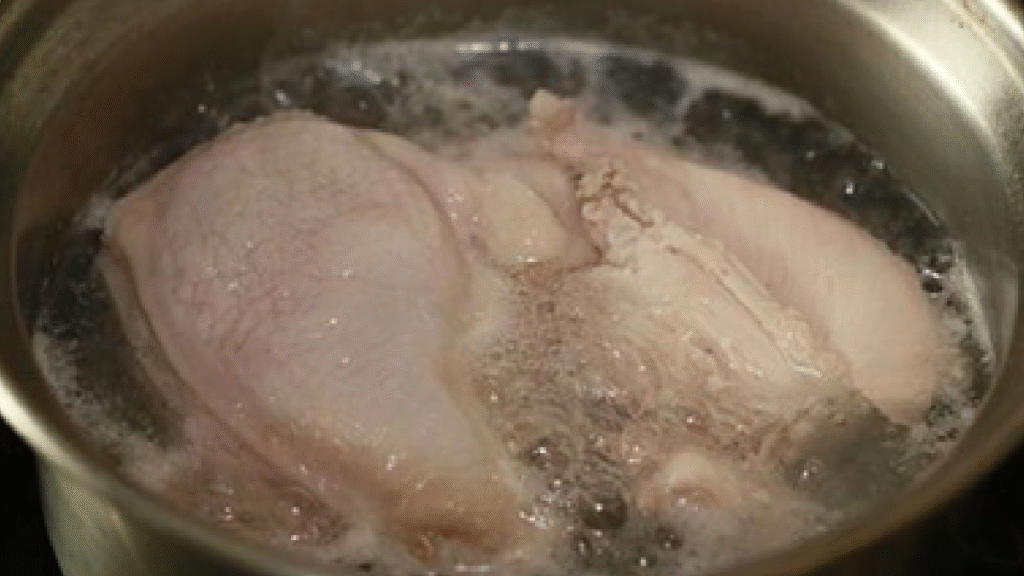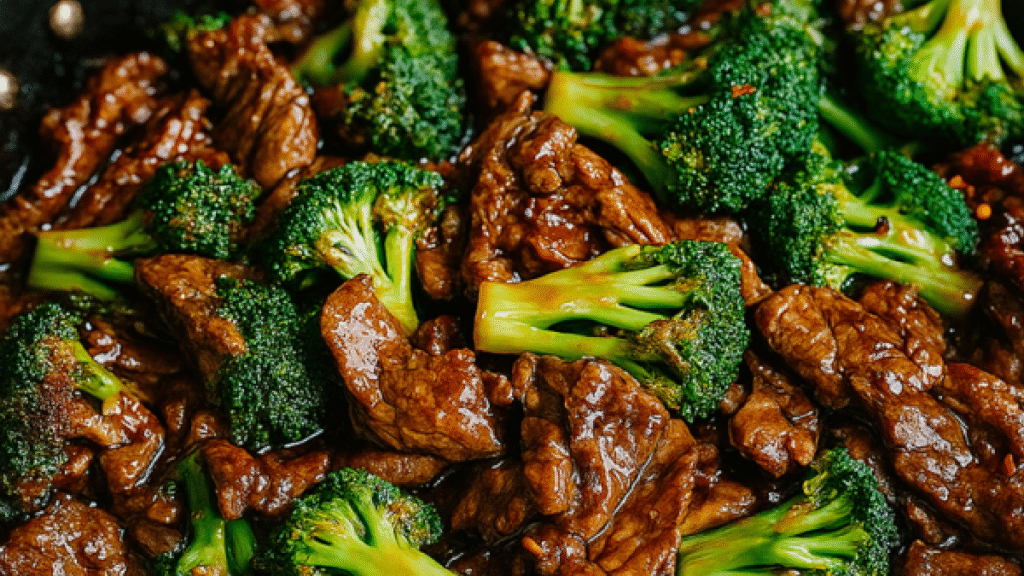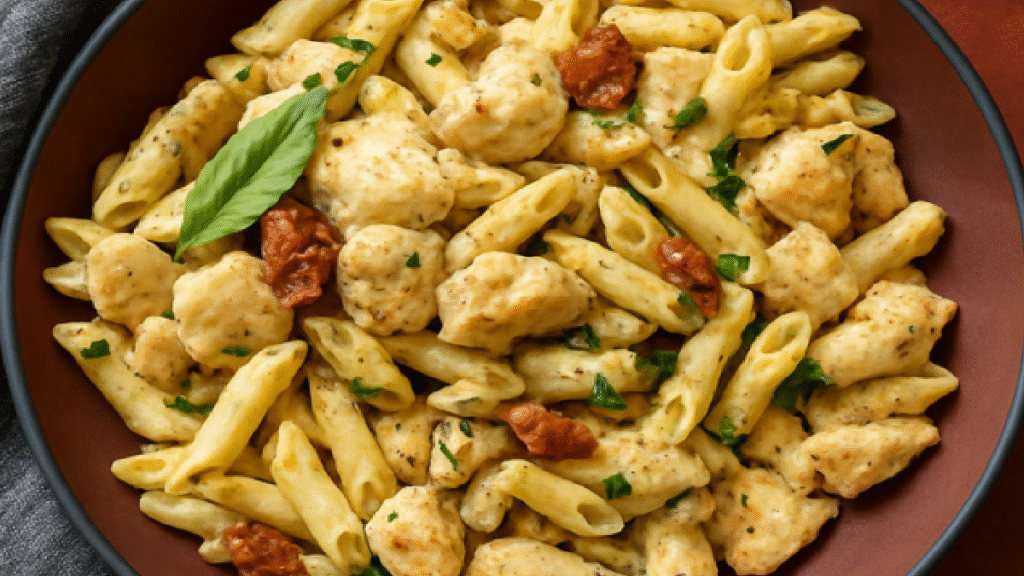Boiling chicken breast is a straightforward method for achieving tender results without much fuss. According to Simply Recipes, this technique yields “silky, tender chicken” with minimal effort. The key to perfectly cooked chicken lies in the cooking time.
When cooking chicken breast, it’s essential to get the timing right to avoid overcooking or undercooking. The right cooking time ensures that the chicken remains juicy and tender.
Key Takeaways
- Boiling is a simple method for cooking chicken breast.
- Correct cooking time is crucial for tender results.
- Overcooking can lead to dry, tough chicken.
- Tender chicken breast is achieved with the right timing.
- Boiling chicken breast is a low-fuss cooking technique.
The Basics of Boiling Chicken Breast
Understanding the fundamentals of boiling chicken breast is essential for achieving perfectly cooked meat. Boiling is a simple and effective cooking method that preserves the nutritional value of chicken.
Why Boiling Is a Healthy Cooking Method
Boiling chicken breast is considered a healthy cooking method because it doesn’t require added oils, thus keeping the calorie count low. According to culinary experts, boiling yields tender chicken that can be used in various dishes. This method is particularly beneficial for those looking to reduce their fat intake while maintaining a high protein diet.
- Retains nutrients
- Low in calories
- Doesn’t require added oils
Equipment You’ll Need
To boil chicken breast, you’ll need some basic kitchen equipment. The essentials include a large pot with a lid, a stove, and a meat thermometer to ensure the chicken is cooked to a safe internal temperature. For added flavor, you can also use aromatic vegetables and herbs. If you’re looking for inspiration on dishes that use boiled chicken, you might want to explore recipes like cuisse de canard, which, while different, showcases the versatility of cooked poultry.
How Long to Boil Chicken Breast: Time Chart
The key to boiling chicken breast lies in knowing the exact cooking time based on its type and state. Boiling is a healthy cooking method that preserves the nutritional value of chicken, but it requires precision to achieve perfectly cooked meat.
To help you navigate the cooking process, we’ve outlined the cooking times for different types of chicken breast. The cooking time varies significantly based on whether the chicken is boneless or bone-in, fresh or frozen, and whole or cut into smaller pieces.
Boneless vs. Bone-in Chicken Breast
Boneless chicken breasts cook faster than bone-in breasts due to the absence of bones, which can slow down the cooking process. Typically, boneless chicken breasts take around 12-15 minutes to cook, while bone-in breasts may require 20-25 minutes.
- Boneless chicken breast: 12-15 minutes
- Bone-in chicken breast: 20-25 minutes
Fresh vs. Frozen Chicken Breast
Fresh chicken breasts cook more quickly than frozen ones. Frozen chicken needs to be thawed during the cooking process, adding to the overall cooking time. Fresh chicken breasts usually take 12-15 minutes, whereas frozen breasts can take up to 30 minutes or more, depending on their size and thickness.
- Fresh chicken breast: 12-15 minutes
- Frozen chicken breast: 25-30 minutes
Whole vs. Cubed or Sliced Chicken
The size and shape of the chicken breast also affect the cooking time. Whole chicken breasts take longer to cook compared to cubed or sliced chicken. Cubed or sliced chicken is ready in about 8-10 minutes, while whole breasts can take 12-15 minutes or more.
- Cubed or sliced chicken: 8-10 minutes
- Whole chicken breast: 12-15 minutes
By referring to this cooking time chart, you can ensure that your chicken breast is cooked to perfection every time. Whether you’re cooking boneless, bone-in, fresh, or frozen chicken, understanding the right cooking times is essential for achieving delicious and safe results.
Factors That Affect Boiling Time
Several key factors can impact how long it takes to boil chicken breast. Understanding these factors is crucial for achieving perfectly cooked chicken every time. Whether you’re cooking for yourself or for a large group, knowing how to adjust cooking times based on specific circumstances can make a significant difference in the quality of your meal.
Size and Thickness of Chicken Breasts
The size and thickness of the chicken breasts are among the most significant factors that affect boiling time. Larger and thicker chicken breasts take longer to cook than smaller ones. According to a reliable source, “For thinner chicken breasts, they may be ready around the 10-minute mark. Larger chicken breasts will take closer to 15 minutes to fully cook.” This variation in cooking time is due to the difference in the thickness of the meat, which affects how quickly heat can penetrate to the center.
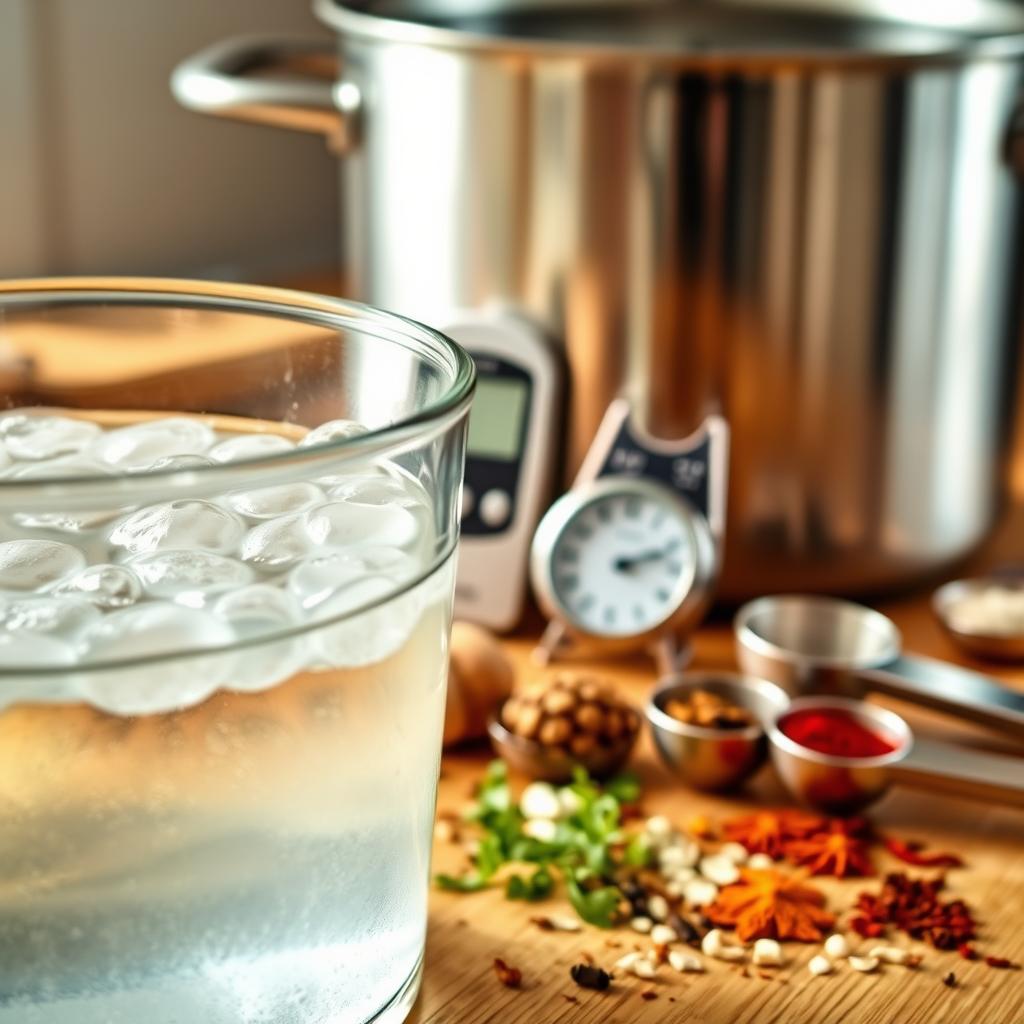
Starting Temperature
The starting temperature of the chicken breast also plays a crucial role in determining the boiling time. Chicken breasts taken directly from the refrigerator will take longer to cook than those at room temperature. This is because the heat has to work harder to cook the chicken through when it’s cold. For more information on handling and storing chicken, you can visit this resource.
Altitude Considerations
Altitude is another factor that can affect boiling time. At higher altitudes, water boils at a lower temperature, which can impact cooking times. This means that at higher elevations, it may take longer to cook chicken breast thoroughly. Understanding the altitude of your cooking location can help you adjust your cooking times accordingly.
Step-by-Step Guide to Perfectly Boiled Chicken
The key to boiling chicken breast lies in understanding the step-by-step process. To achieve perfectly boiled chicken, it’s essential to follow a detailed guide that covers preparation, the boiling process, and the importance of a resting period.
Preparing the Chicken
Preparing the chicken is a crucial step in the boiling process. Start by rinsing the chicken breasts under cold water, then gently pat them dry with paper towels. This helps remove any impurities and excess moisture, ensuring even cooking. Next, season the chicken with your desired herbs and spices. According to culinary experts, “Place the chicken in a large pot and pour broth over to cover; generously season with salt and pepper.” You can also add aromatic vegetables like onions, carrots, and celery to enhance the flavor.
The Boiling Process
The boiling process involves submerging the chicken in liquid (water or broth) and cooking it until it reaches the desired doneness. Bring the liquid to a boil, then reduce the heat to a simmer. For boneless chicken breasts, cooking time is typically around 12-15 minutes, while bone-in breasts may require 20-25 minutes. It’s crucial to use a meat thermometer to ensure the chicken reaches a safe internal temperature of 165°F (74°C). For more detailed cooking times, refer to the boiling chicken guide for various chicken breast types.
Resting Period
After boiling, remove the chicken from the heat and let it rest in the liquid for a few minutes. This resting period allows the juices to redistribute, making the chicken more tender and juicy. Once rested, remove the chicken from the liquid and let it cool before slicing or shredding. This step is crucial for achieving perfectly boiled chicken that’s ready to use in various recipes.
How to Tell When Chicken Breast Is Done
Determining when chicken breast is fully cooked can be achieved through several reliable methods. Ensuring the chicken is cooked properly is not only crucial for food safety but also for achieving the best texture and flavor.
Using a Meat Thermometer
The most accurate way to check if chicken breast is done is by using a meat thermometer. According to cooking experts, the chicken is done when it registers 165°F in the thickest part of the meat. For more detailed cooking guides and recipes, you can visit Buzzito, which offers a variety of culinary tips.
Visual Indicators
While a thermometer is the most accurate method, there are also visual indicators to check for doneness. Cooked chicken breast should be white and firm to the touch. If you cut into it, the juices should run clear. These visual cues can be useful when a thermometer is not available.
Texture Test
Another method to check if chicken breast is cooked is the texture test. Cooked chicken should feel firm and springy to the touch. If it feels soft or squishy, it may not be fully cooked. Here are some key points to remember:
- Use a meat thermometer for accuracy.
- Check for visual indicators like color and juice clarity.
- Perform a texture test to ensure firmness.
By following these methods, you can ensure your chicken breast is cooked to perfection every time.
Flavoring Your Boiled Chicken
Boiled chicken doesn’t have to be bland; there are numerous ways to infuse flavor into this lean protein. By incorporating the right ingredients, you can transform a plain boiled chicken into a delicious meal.
Essential Herbs and Spices
Herbs and spices are a great way to add flavor to boiled chicken. Popular options include thyme, rosemary, garlic powder, and paprika. You can mix and match these ingredients to create a blend that suits your taste preferences. For instance, a combination of thyme and rosemary can give your chicken a savory flavor, while a sprinkle of paprika can add a smoky touch.
When using herbs and spices, it’s essential to balance the flavors. Start with a small amount and adjust to taste. You can also mix the herbs and spices with a bit of oil or butter to create a marinade before boiling the chicken.
Aromatic Vegetables
Aromatic vegetables like onions, carrots, and celery can add depth to your boiled chicken. These vegetables release their flavors into the water, infusing the chicken with a rich, savory taste. You can also add other aromatic vegetables like leeks or garlic to the pot for extra flavor.
To maximize the flavor, chop the vegetables into smaller pieces before adding them to the pot. This will help release their flavors more efficiently. You can also sauté the vegetables lightly before boiling to bring out their natural sweetness.
Broth vs. Water
Using broth instead of water is another effective way to flavor your boiled chicken. Chicken broth, in particular, can enhance the chicken’s natural flavor. You can use store-bought broth or make your own by simmering chicken bones and vegetables.
When using broth, be mindful of the salt content, as it can vary significantly between different broths. Adjust the seasoning accordingly to avoid over-salting your dish. You can also dilute the broth with water if you prefer a milder flavor.
Common Mistakes When Boiling Chicken Breast
Achieving perfectly boiled chicken breast requires avoiding some common pitfalls. Boiling chicken breast is a straightforward cooking method, but it demands attention to detail to produce tender and flavorful results.
Several common mistakes can lead to less-than-desirable outcomes when boiling chicken breast. Being aware of these errors can help you achieve better results in your cooking.
Overcooking Issues
One of the most common mistakes when boiling chicken breast is overcooking. Overcooking can result in dry, tough meat that’s unpleasant to eat. To avoid this, it’s crucial to monitor the cooking time closely. The cooking time will vary based on factors such as the size and thickness of the chicken breasts. Using a meat thermometer can help ensure that the chicken is cooked to a safe internal temperature of 165°F (74°C) without overcooking it.
- Use a meat thermometer to check for doneness.
- Don’t overcrowd the pot, as this can lead to uneven cooking.
- Keep an eye on the cooking time and adjust based on the size of the chicken breasts.
Underseasoning Problems
Another mistake is underseasoning the chicken. Boiling chicken breast can result in bland flavors if not seasoned properly. To combat this, you can add herbs and spices to the water or broth for extra flavor. For more information on seasoning and cooking methods, you can explore recipes like gratin de pâtes, which often involve boiled chicken.
Starting with Cold vs. Hot Water
Starting the chicken in cold water versus hot water is another consideration. According to experts, it’s better to start chicken in cold water and then bring it to a boil. This method helps in achieving a more even cooking process. As noted, “Never add the chicken directly to boiling liquid. Instead, start the chicken in cold broth or water and heat the two simultaneously.”
By being aware of these common mistakes and taking steps to avoid them, you can achieve perfectly boiled chicken breast that’s both tender and flavorful.
Alternative Methods to Traditional Boiling
Beyond traditional boiling, methods like poaching, sous vide, and pressure cooking offer unique benefits for preparing chicken breast. These alternative cooking methods can provide tender and flavorful results, each with its own advantages.
Poaching Technique
Poaching is a moist-heat cooking method that involves submerging the chicken in liquid (usually water or broth) at a low temperature. This technique helps retain the chicken’s moisture and flavor. To poach chicken breast, bring the liquid to a simmer, then reduce the heat to a low setting and cook for 15-20 minutes, or until the chicken reaches an internal temperature of 165°F (74°C).
Benefits of Poaching:
- Retains moisture and flavor
- Low-fat cooking method
- Versatile – can be used with various flavorings and aromatics
Sous Vide Method
Sous vide cooking involves sealing the chicken breast in airtight bags and then cooking it in a water bath at a precisely controlled temperature. This method ensures that the chicken is cooked evenly throughout. For chicken breast, the sous vide machine should be set to 130°F – 140°F (54°C – 60°C) for 1-4 hours.
Advantages of Sous Vide:
- Precise temperature control for consistent results
- Retains nutrients and flavors
- Minimal monitoring required during cooking
Pressure Cooker Method
Cooking chicken breast in a pressure cooker significantly reduces cooking time while retaining moisture. To cook chicken breast in a pressure cooker, season the chicken, add it to the cooker with some liquid (such as broth or water), and cook on high pressure for 8-12 minutes, followed by a quick release.
Key Benefits: Rapid cooking time, energy efficiency, and the ability to cook chicken breast to tender perfection.
These alternative cooking methods offer a range of benefits and can be chosen based on personal preference, available equipment, and the desired outcome. Whether you opt for the gentle heat of poaching, the precision of sous vide, or the speed of a pressure cooker, you can achieve deliciously cooked chicken breast with each method.
Nutritional Benefits of Boiled Chicken Breast
Boiled chicken breast stands out for its impressive nutritional benefits, making it a valuable component of a healthy diet. It is rich in essential nutrients while being low in undesirable elements like excess fat.
The nutritional profile of boiled chicken breast includes high-quality protein, minimal fat, and a low caloric count, contributing to its health benefits.
Protein Content and Quality
Boiled chicken breast is an excellent source of protein, crucial for muscle repair, growth, and overall bodily functions. The protein content in boiled chicken breast is of high quality, containing all essential amino acids necessary for the body.
A typical serving of boiled chicken breast provides a significant amount of protein, making it an ideal choice for those looking to increase their protein intake.
Fat Content and Caloric Value
One of the key advantages of boiled chicken breast is its low fat content and caloric value. It is particularly low in saturated fats, making it a heart-healthy option.
The low caloric count of boiled chicken breast also makes it suitable for those monitoring their calorie intake, whether for weight management or overall health.
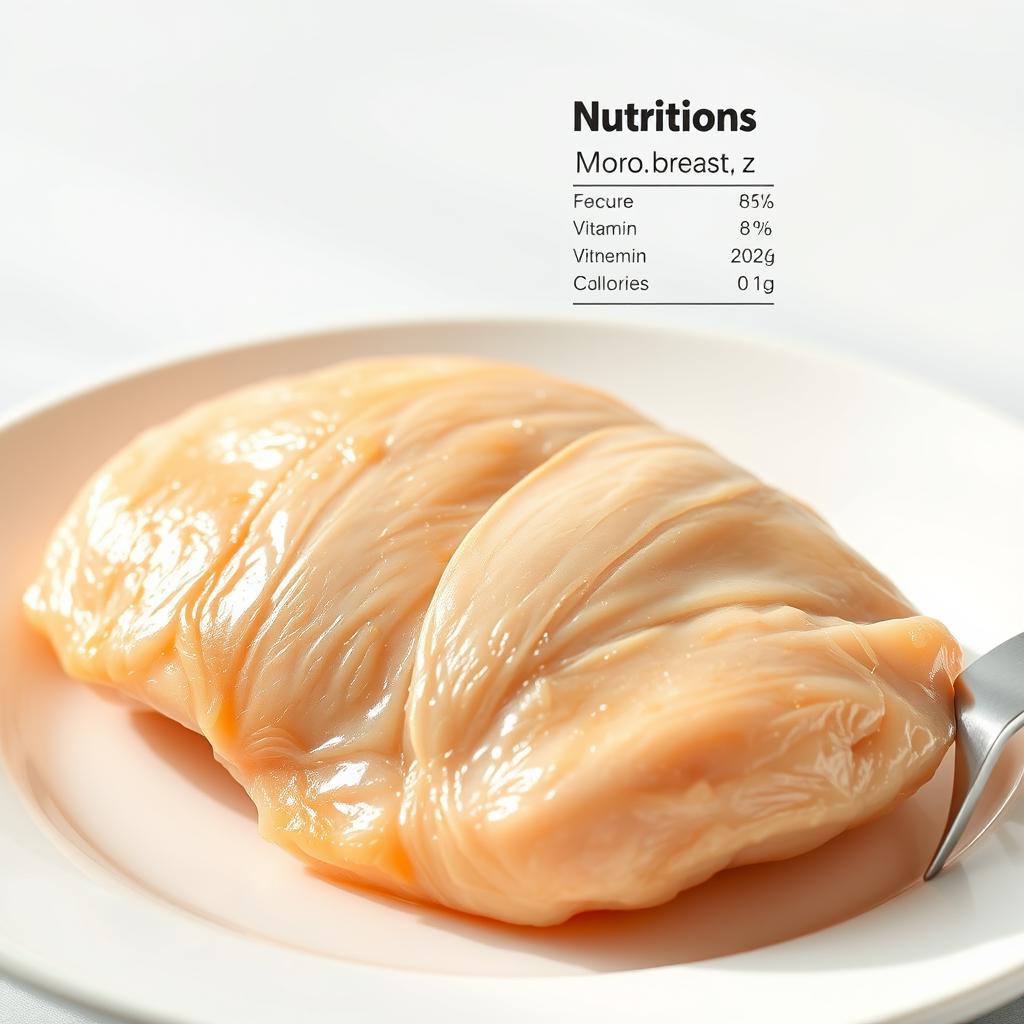
Storage and Food Safety
Food safety doesn’t end with cooking; proper storage of boiled chicken is essential. After boiling chicken breast to perfection, it’s crucial to handle and store it correctly to prevent bacterial growth and maintain its quality.
Refrigeration Guidelines
When refrigerating boiled chicken breast, it’s essential to cool it down to room temperature within two hours of cooking. Store it in a covered, airtight container to prevent cross-contamination and keep it refrigerated at 40°F (4°C) or below. Boiled chicken breast can be safely stored in the refrigerator for 3 to 4 days. Label the container with the date it was cooked to ensure you use it within the safe timeframe.
Freezing Boiled Chicken
For longer storage, consider freezing your boiled chicken breast. Cool the chicken to room temperature, then place it in an airtight container or freezer bag, making sure to press out as much air as possible before sealing. Frozen boiled chicken breast can be stored for up to 4 months. When you’re ready to use it, simply thaw it overnight in the refrigerator or thaw it quickly by submerging the container in cold water.
Reheating Methods
When reheating boiled chicken breast, it’s vital to heat it to an internal temperature of 165°F (74°C) to ensure food safety. You can reheat it in the microwave by covering it with a microwave-safe lid and heating it in 15-second intervals until warmed through, stirring or turning the chicken between each interval. Alternatively, you can reheat it on the stovetop or in the oven. Always check the chicken is steaming hot before serving.
By following these storage and reheating guidelines, you can enjoy your boiled chicken breast while maintaining its safety and quality.
Delicious Recipes Using Boiled Chicken Breast
Boiled chicken breast is a culinary canvas waiting for your creative touch. With its neutral flavor and tender texture, it can be transformed into a variety of dishes that cater to different tastes and dietary needs.
According to culinary experts, boiled chicken can be used immediately or stored in the refrigerator for up to five days, making it a convenient ingredient for meal planning.
Chicken Salads
One of the most popular ways to use boiled chicken breast is in salads. You can create a classic chicken salad by mixing the chicken with mayonnaise, chopped celery, and herbs like parsley or dill. For a healthier option, try combining boiled chicken with mixed greens, cherry tomatoes, and a light vinaigrette.
Other salad ideas include a Greek chicken salad with olives and feta cheese, or an Asian-style chicken salad with soy sauce, ginger, and crunchy vegetables.
Soups and Stews
Boiled chicken breast is also a great addition to soups and stews. It can be added to a hearty chicken noodle soup or used in a clear chicken broth with vegetables and noodles. For a more comforting option, try making a chicken and rice stew with boiled chicken, rice, and aromatic spices.
Other ideas include a chicken tortilla soup with crispy tortilla strips or a chicken and vegetable stew with a variety of colorful vegetables.
Quick Weeknight Meals
For quick and easy meals, boiled chicken breast can be used in a variety of dishes. You can make a chicken sandwich by slicing the chicken and serving it on a bun with your favorite toppings. Alternatively, try adding boiled chicken to a stir-fry with your favorite vegetables and a savory sauce.
Other quick meal ideas include chicken wraps with hummus and vegetables or chicken quesadillas with cheese and salsa.
French-Inspired Dishes with Boiled Chicken
With its lean protein and tender texture, boiled chicken breast is an ideal canvas for exploring the flavors and techniques of French cooking. French cuisine, known for its sophistication and elegance, can be effortlessly incorporated into home cooking with boiled chicken as a base.
Classic French Chicken Recipes
Classic French recipes often feature chicken as a main ingredient. Boiled chicken can be used in traditional dishes such as Chicken Cordon Bleu, where the chicken is stuffed with ham and cheese, or in a simple Poulet à la Mère, a classic dish from the Lyon region. These recipes showcase the versatility of boiled chicken in French cuisine.
Another classic use is in Chicken Salad with a French twist, incorporating ingredients like Dijon mustard, fresh herbs, and a light vinaigrette. This makes for a refreshing and healthy meal or snack.
Modern French Cuisine Using Boiled Chicken
Modern French cuisine continues to evolve, incorporating new flavors and techniques while maintaining traditional roots. Boiled chicken can be a key ingredient in contemporary dishes, such as a Chicken and Avocado Salad with a lemon-tahini dressing or as a topping for a hearty French Onion Soup. The tender chicken pairs well with the rich flavors of caramelized onions and melted cheese.
Additionally, boiled chicken can be shredded and used in French-inspired wraps or as a filling for crêpes, offering a quick and delicious meal option that blends traditional French flavors with modern convenience.
Conclusion
Boiling chicken breast is a simple yet effective way to achieve tender and flavorful chicken. By following the cooking tips outlined in this article, you can ensure perfectly cooked chicken every time. Whether you’re preparing a hearty soup, a fresh salad, or a quick weeknight meal, boiling chicken breast is a versatile technique that yields delicious results.
The key to tender chicken lies in understanding the factors that affect boiling time, such as the size and thickness of the chicken breasts, starting temperature, and altitude considerations. By mastering these elements and using the right cooking techniques, you can enjoy juicy and flavorful chicken in a variety of dishes.
With the knowledge gained from this article, you’re now equipped to take your cooking to the next level. Experiment with different seasonings, herbs, and aromatics to create mouth-watering boiled chicken breast recipes that will delight your family and friends.
FAQ
How long should I boil chicken breast?
The boiling time for chicken breast varies depending on factors like the size and thickness of the breast, whether it’s boneless or bone-in, and if it’s fresh or frozen. Generally, boneless chicken breast takes around 12-15 minutes to cook, while bone-in chicken breast may take 20-30 minutes.
Can I boil frozen chicken breast?
Yes, you can boil frozen chicken breast, but it will take longer than boiling fresh chicken breast. It’s essential to ensure the chicken is cooked to a safe internal temperature of 165°F (74°C).
How do I know when boiled chicken breast is done?
You can check if boiled chicken breast is done by using a meat thermometer, checking for visual indicators like white and firm meat, or performing a texture test. The chicken should be cooked to an internal temperature of 165°F (74°C).
Can I add flavor to boiled chicken breast?
Yes, you can add flavor to boiled chicken breast by using herbs, spices, aromatic vegetables, or cooking it in broth instead of water. This can enhance the taste and make it more delicious.
How should I store boiled chicken breast?
Boiled chicken breast should be stored in the refrigerator within two hours of cooking. It can be refrigerated for up to 3-4 days or frozen for up to 3-4 months. When reheating, make sure it reaches a minimum internal temperature of 165°F (74°C).
Can I reheat boiled chicken breast?
Yes, you can reheat boiled chicken breast using various methods like microwaving, oven reheating, or stovetop reheating. Ensure it reaches a safe internal temperature of 165°F (74°C) to avoid foodborne illness.
What are some common mistakes to avoid when boiling chicken breast?
Common mistakes include overcooking, underseasoning, and starting with cold water. To avoid these, use a thermometer, season the chicken, and start with hot water or bring the water to a boil before adding the chicken.
Are there alternative methods to boiling chicken breast?
Yes, alternative methods include poaching, sous vide, and pressure cooking. These methods can help achieve tender and flavorful chicken breast with varying textures and flavors.
What are the nutritional benefits of boiled chicken breast?
Boiled chicken breast is an excellent source of protein, low in fat, and relatively low in calories. It’s a nutritious option for those looking for a healthy protein source.
Can I use boiled chicken breast in various recipes?
Yes, boiled chicken breast can be used in a variety of dishes, such as salads, soups, stews, and quick weeknight meals. It’s a versatile ingredient that can be incorporated into many recipes.

